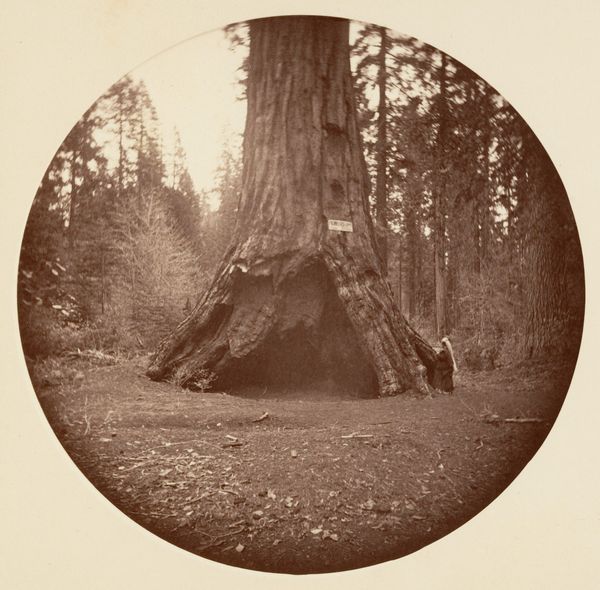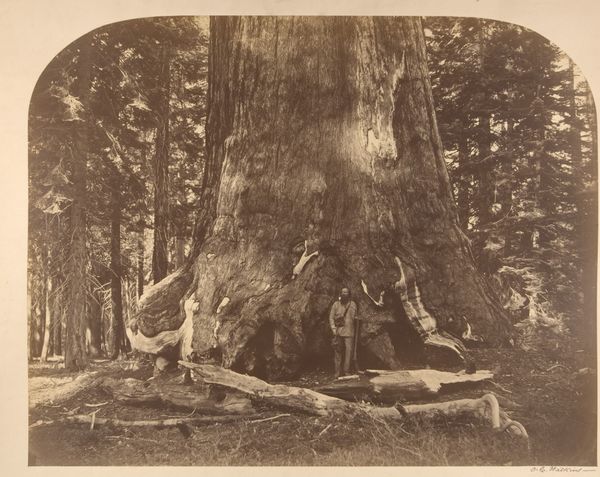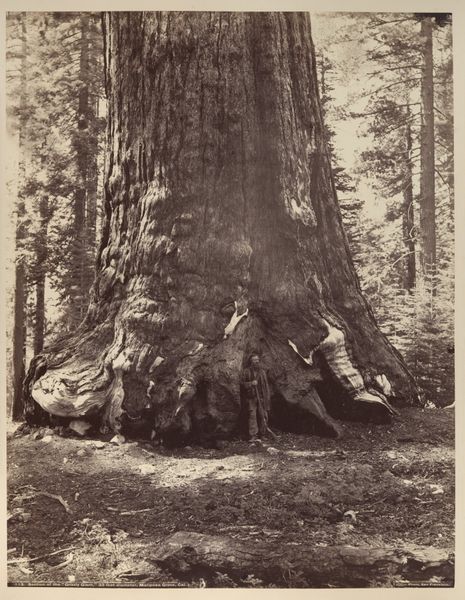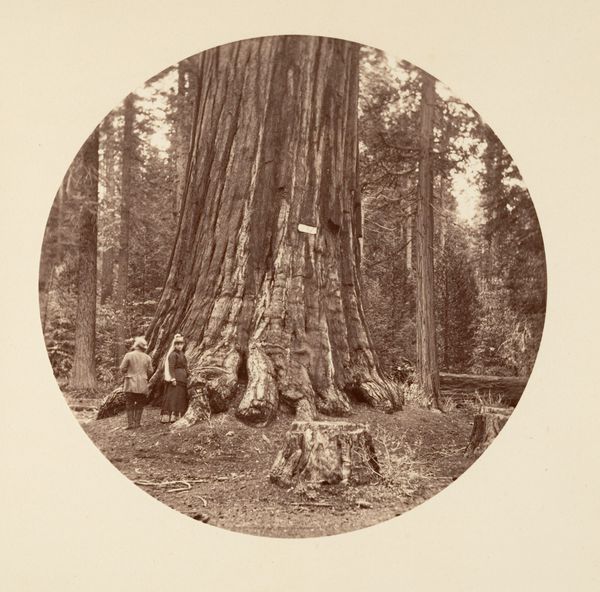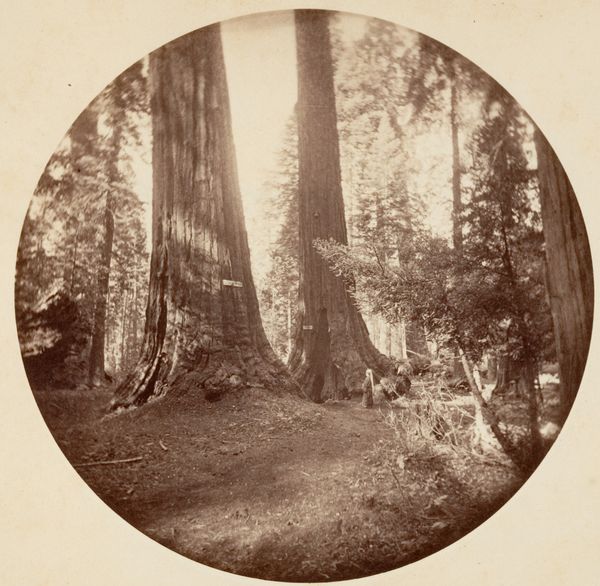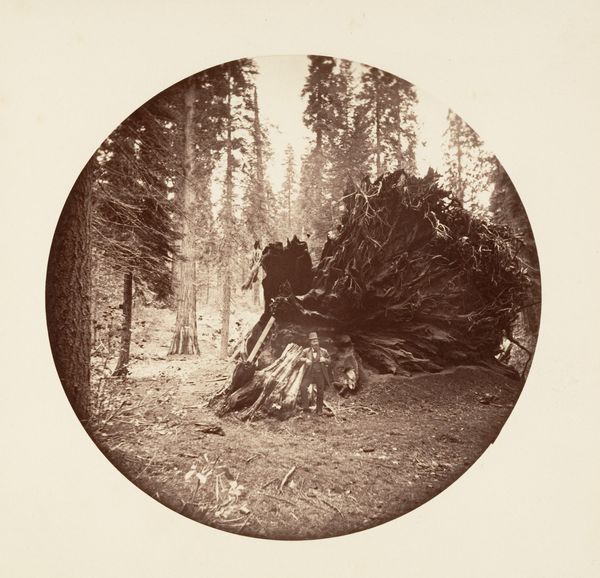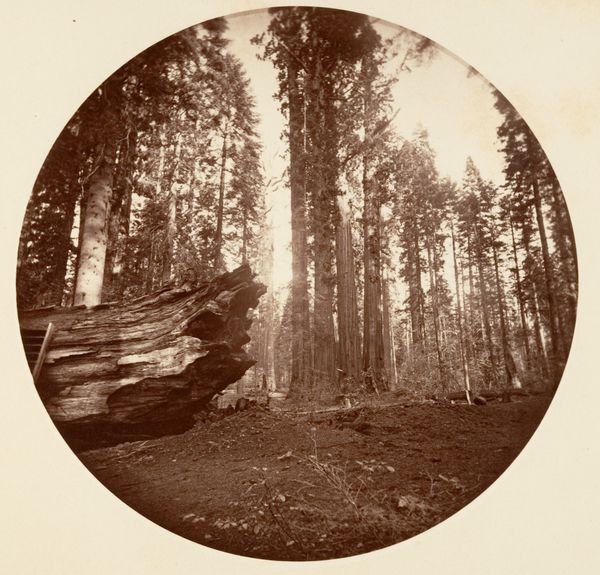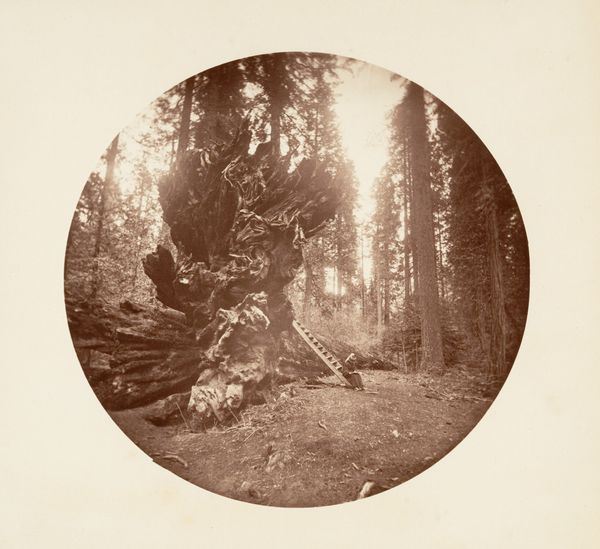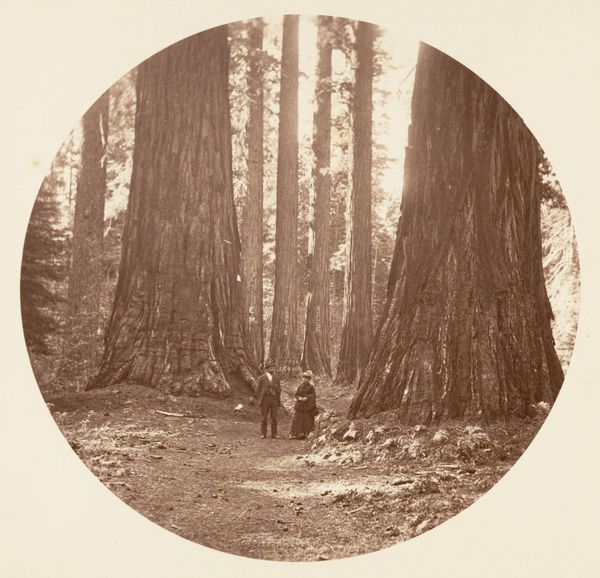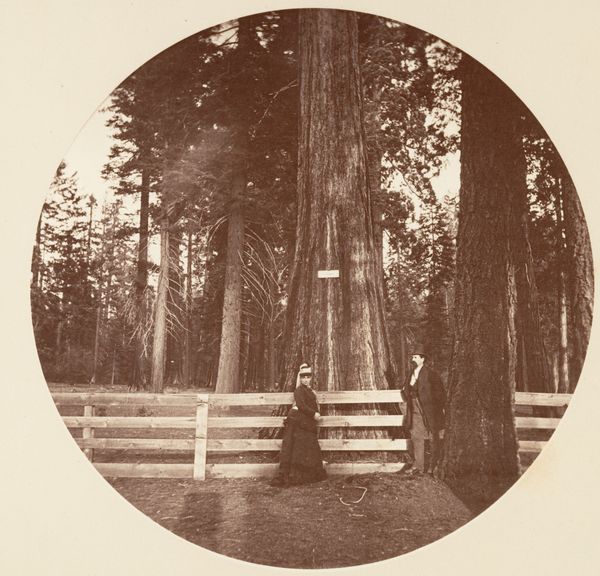
The Mother of the Forest - Calaveras Grove 1876 - 1880
0:00
0:00
Dimensions: Image: 12.5 x 12.5 cm (4 15/16 x 4 15/16 in.), circular Album page: 24 x 25.1 cm (9 7/16 x 9 7/8 in.)
Copyright: Public Domain
Curator: Standing before us is Carleton Watkins' photograph, "The Mother of the Forest - Calaveras Grove," taken between 1876 and 1880. This gelatin-silver print, a lasting image from the Calaveras Grove, freezes a specific moment. Editor: The first word that springs to mind is "vulnerable." It’s a striking image, of course, yet it conveys this overwhelming sense of exposure and something that’s been violated through exposure, especially looking at the trunk of the giant sequoia. Curator: Exactly, these trees represent something far more complex than mere arboreal grandeur. Throughout many cultures, large trees are symbols of ancient wisdom, strength, and resilience, embodying the spirit of nature and its cyclical rhythms. Do you see similar symbology? Editor: I do. But it goes a bit deeper, in this picture it looks as though the sequoia trunk bears the literal and metaphorical scars inflicted by colonial intrusion and exploitation. One feels a profound loss, a disruption in both the ecology and collective consciousness, given its cultural and economic significance during Westward expansion. Curator: Watkins’ involvement with the California Geological Survey gives context to how he views nature. It seems his motivations weren’t purely environmental advocacy, as he was documenting land for potential resource extraction as well as preservation. How might that dual position impact the reading of this image? Editor: The duality reveals uncomfortable truths about the environmental movement itself. In other words, progress and preservation are inherently entangled with colonial agendas and capitalist pursuits. "The Mother of the Forest," as Watkins titled it, now makes you ask what sort of mother, really? Curator: Indeed. These images were used in the service of development as much as they were records of what needed protection. There is this contradiction, this conflict of progress, industry, and preservation inherent within these striking works. Editor: Precisely. This picture encourages us to examine both its artistry and its implications as a historical artifact—a prompt for critically evaluating our past, as well as striving toward a future that values not only stewardship but meaningful justice and healing. Curator: Yes, art such as this expands our field of vision and fosters deeper discussions beyond just the image. I hope our listeners will come to discover more about these hidden aspects themselves.
Comments
No comments
Be the first to comment and join the conversation on the ultimate creative platform.

